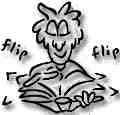Contents
PhotoReading Review
Beyond Speed Reading
Learning Strategies, the manufacturers of the hypnotic/subliminal paraliminal series and the Genius Code, claim to have moved a step beyond speed reading with their PhotoReading course.
The creator of PhotoReading, Paul Scheele, claims that anyone can use the course
to learn how to read and retain information at an astonishing 25,000 words per minute. A bold statement to say the least. So we just had to test it.
Anyone who has used speed-reading techniques knows that they are valuable when short of time but big on reading material (all you students out there in cyber land
will be noding your heads at this point). Photo Reading
Reading
Testing the PhotoReading Course
As students are the best test cases for such a study we enlisted the help of several. After all if the product didn’t work then they wouldn’t get the grades. Tangible
results were needed not just the usual placebo and a weak statement such as
“well I think I remember most of it” would just not do!
Although this is far from a scientific evaluation, we believe it is a better way to to determine the potential benefits rather than just buying ‘blind’.
Method
PhotoReading courses were used by students prior to their second, fourth and sixth assignments. Only three of the six st udents would use photoreading prior to the exam. Typically, each student was enrolled in a course that had 6 assignments and one exam. The subjects ranged from a BSc in Psycholgy to a BSc in Information Technology. We chose the sciences because the majority of the questions/answers are fairly clear-cut and cannot be left as open to intrepretaion as is the case with an Arts degree.
udents would use photoreading prior to the exam. Typically, each student was enrolled in a course that had 6 assignments and one exam. The subjects ranged from a BSc in Psycholgy to a BSc in Information Technology. We chose the sciences because the majority of the questions/answers are fairly clear-cut and cannot be left as open to intrepretaion as is the case with an Arts degree.
The first,third and fifth assignments were to be used as a measure against the second, fourth and sixth assignments (when photoreading techniques were to be employed).The exam scores of the three students using photoreading would also be compared to the three who did not.
Results
 The first assignments ranged in scores from the low 50s to the high 70s. At this point photoreading techniques were taught to all six students who immediately put them to work in the preparation of their next assignment. In all the second assignments each student showed an improvement adding an average of 10 marks to their scores. This looks impressive at first sight. However, you must remember that as the students progressed in their respective subjects they were becoming more adept at understanding the structure of their course materials and the expectency of their tutors. This would naturally lead to higher grades if the information was acted upon. Therefore these reults were not enough alone, to make an assessment.
The first assignments ranged in scores from the low 50s to the high 70s. At this point photoreading techniques were taught to all six students who immediately put them to work in the preparation of their next assignment. In all the second assignments each student showed an improvement adding an average of 10 marks to their scores. This looks impressive at first sight. However, you must remember that as the students progressed in their respective subjects they were becoming more adept at understanding the structure of their course materials and the expectency of their tutors. This would naturally lead to higher grades if the information was acted upon. Therefore these reults were not enough alone, to make an assessment.
Photoreading techniques were not used in the third assignments and there was still a marignal improvement in the scores of two of the students while 3 others gained a similar grade as before.
Only one student dropped a grade.
When photoreading techniques were employed again for the next assignment 5 of the students increased their results marginally. However the student who had dropped a grade moved up two grades.
On the fifth assigment all students maintained their grades but on the sixth,(possibly because they were becoming more profiecient in the use of photo-reading and their repsective courses) all students moved into the top grading positions.
The examination seemed to confirm earlier findings as the three students who used photoreading achieved a top grade in their exam results while only one of the three students who did not use photo reading to revise achieved the same grade.
Conclusion
The PhotoReading course seems to work well. However, this report is not meant to be a scientific analysis of photo-reading (more a fun way to see if the course is worth investigating) although it did lead us to the belief that a profes sional scientific study is warranted.
sional scientific study is warranted.
Whether or not the results obtained were a direct result of employing photoreading or due to many other factors not taken into account in this short study is debatable. However, one marked and clear difference that was observed when using the techniques was that of ‘time’. Every student reduced their study time by at least half the ‘norm’, while either maintaing or increasing their course scores. It would therefore appear that photo reading can at least allow you to quickly scan through written material with the same results you would get from conventional reading styles.
If you are short of time or have large amounts of written material to read our recomendation is that photoreading is worth investigating.
BLAST through your reading three times faster than you can now (without speed reading).
